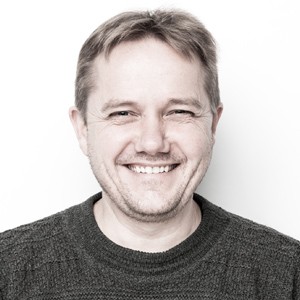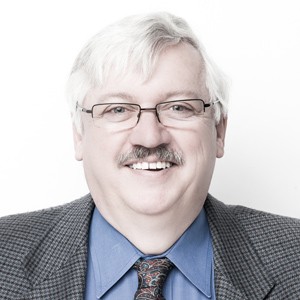Orcas
Dr. Gavin HankeCurator of Vertebrate Zoology
Why did you want to become a curator?
I am a collector and I have always been interested in nature. As a student, I spent many hours collecting fishes, amphibians and reptiles and helped build a research collection at the University of Manitoba. I prepared skeletal material and reconstructed reptile skulls starting in high school and I have hands-on experience building models and dioramas. Museum work is a perfect fit for me.
How did you become a zoology curator?
My education? At the University of Manitoba I did a bachelor of science in general zoology and master of science on exotic fish introductions. As a hobby, during my master’s degree, I published research on placoderm fossils from the Interlake region of Manitoba. My doctorate degree (PhD) at the University of Alberta focused on fossil fishes but, instead of placoderms, I looked at acanthodians and an odd group of fishes thought to be related to the cartilaginous fishes (sharks, rays and ratfishes). Shortly after my PhD in 2001, I was hired back in Winnipeg as the zoology curator at the Manitoba Museum. In early 2004, I headed west.
What do you do as curator of vertebrate zoology?
I collect specimens for the museum (particularly fish, amphibian and reptile) and write research papers which are published and available internationally. I help other researchers with their work and maintain contacts with other agencies in British Columbia to obtain as many specimens as possible—from areas where we rarely visit (like northern BC). I have particular interest in exotic species introductions in Canada and the role of the pet trade and food industry in exotic species dispersal. Curators also help develop exhibits—both travelling exhibits and permanent displays here at the Royal BC Museum—and act as a filter to make scientific literature accessible to a general audience.
Tell us something you learned that you didn’t know before working on the orcas exhibition.
While preparing this exhibit, I learned that an orca from the Salish Sea ended up near my birthplace. The first orca I saw in person was caught in the Salish Sea. Then I ended up on the shores of the Salish Sea making an exhibit on orcas. Without knowing it, I had a long history with the orcas from this region.
Dr. Lorne HammondCurator of History (Retired)
Why did you want to become a historian?
When I was young we lived and vacationed among a mix of Etruscan, Roman and Renaissance sites and World War II battlefields in Germany and Italy. Right from the start history was about people, museums and art galleries, objects, books and physical landscapes. And I had great teachers.
How did you become a curator?
I moved from academic classrooms to the museum when my wife Monica spotted an interesting history job and I applied. They liked my mix of skills. I was very fortunate to be mentored by a deeply experienced staff and was immediately thrown into the busy world of collections, exhibits and work with the public.
How would you describe a typical day at work?
I was told when I was hired “you will never be bored”. That is still true. A day is a mix of public inquiries, email research questions, collections work, media requests, mentoring interns and work with docents on collections or public education training. A constant is the team work on projects across a wide variety of departments. No two days are exactly the same.
What was your favourite thing about working on the orcas exhibition?
It’s always great to be part of the Royal BC Museum team needed for such a complex and emotional project. For me if there was one part I really loved it was working with those who knew these historic orcas personally and having them share their thoughts and stories, and uncovering lost images and film



